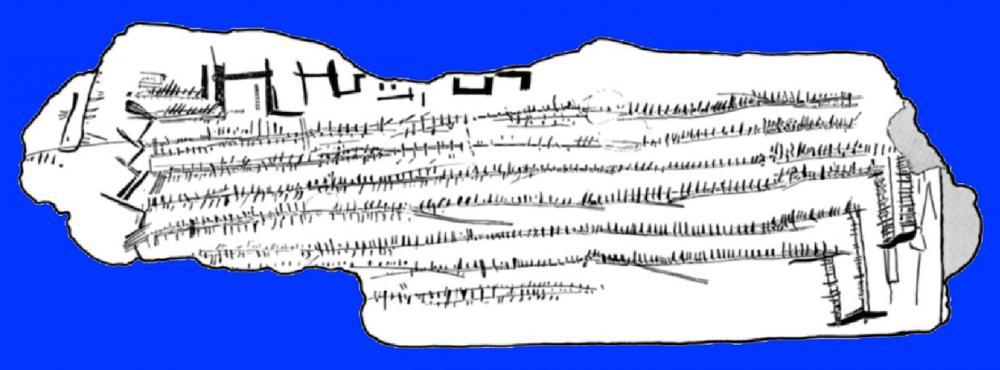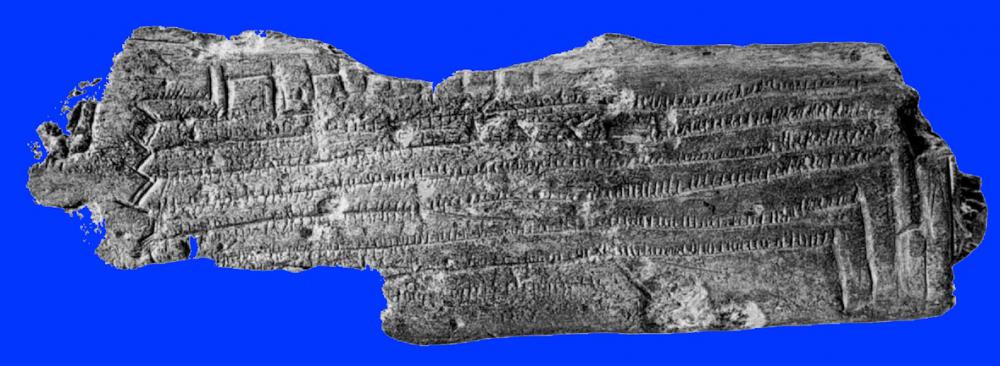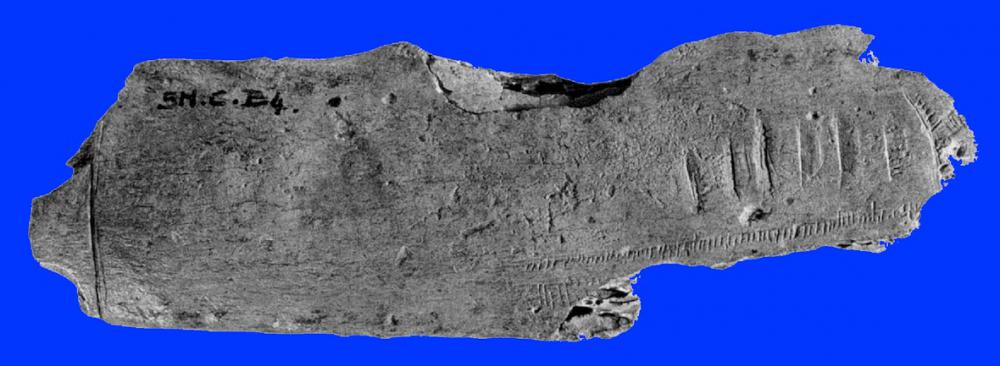
Category of Astronomical Heritage: tangible movable
The Thaïs Bone, France

Presentation and analysis
Geographical position
Place of manufacture
No information available
Place of discovery
The Thaïs cave (Grotte de Thaïs, variants Thaï/Taïs/Taï) is situated in Saint-Nazaire-en-Royans, Département de la Drôme, France.
Place of storage or display
The Thaïs bone is in the collection of the Musée de Valence, France (inventory no. 792-33).
Location
Place of manufacture
No information available
Place of discovery
Original location (find spot): Latitude 45° 3′ 53″ N, longitude 5° 16′ 24″ E. Elevation 220m above mean sea level.
Place of storage or display
Current location: Latitude 44.931083° N, 4.889697 E
Physical description
The Thaïs cave is located close to the confluence of the rivers Bourne and Isère, at the foot of the Vercors limestone massif. It consists of two dry sections and continues down into a large and deep system of water-filled galleries.
The Thaïs bone’, excavated from the cave, is part of a bovine rib, measuring 87 mm × 27 mm, and is engraved on both faces.
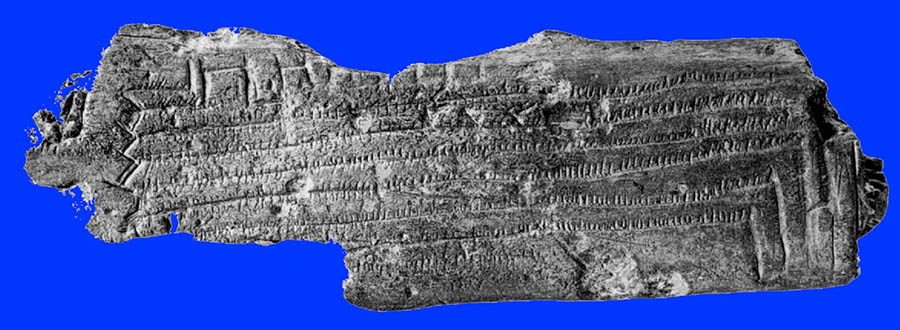
Fig. 1. The ‘main face’ of the Thaïs bone, after Marshack 1991
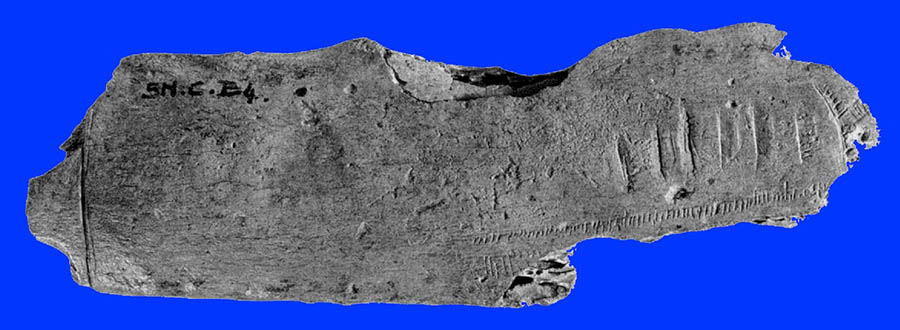
Fig. 2. The reverse of the Thaïs bone, after Marshack 1991
The reverse contains one further line crossed by shorter strokes, together with a small remaining part of a second. It also contains six broader strokes in the perpendicular direction.The ‘main face’ contains seven long incised lines running more or less parallel to the longer edges. Connecting lines evident in one corner indicate that these actually formed a single line criss-crossing the face in boustrophedon style. Engraved perpendicular to this principal line, both above, below and over it, are large numbers of shorter strokes grouped into distinct sets 1-2 cm long. Microscopic analysis shows that the sets of marks were made using various tools at different times. The sequence is characterized by clustering, variation, and periodicity.
History
A limited exploration of the cave was undertaken in 1878, according to dated graffiti the speleologists left behind. The first of several siphons was discovered in 1957, enabling access to the water-filled galleries. Excavations were carried out 1968-69 by J.É. and J.L. Brochier. In the 1970s the cave was set up for visits by tourists.
Bone fragment no. 450, ‘the Thaïs bone’, was excavated from the cave in 1968-69. Its archaeological context indicates a date around 12,000 BP, in the early Azilian period.
Use and cultural dimension
The engraving on the Thaïs bone is a non-decorative notational system of considerable complexity. The cumulative nature of the markings together with their numerical arrangement and various
other characteristics strongly suggest that the notational sequence on the main face represents a non-arithmetical record of day-by-day lunar and solar observations undertaken over a time period of as much as 3½ years. The markings appear to record the changing appearance of the moon, and in particular its crescent phases and times of invisibility, and the shape of the overall pattern suggests that the sequence was kept in step with the seasons by observations of the solstices. The latter implies that people in the Azilian period were not only aware of the changing appearance of the moon but also of the changing position of the sun, and capable of synchronizing the two.
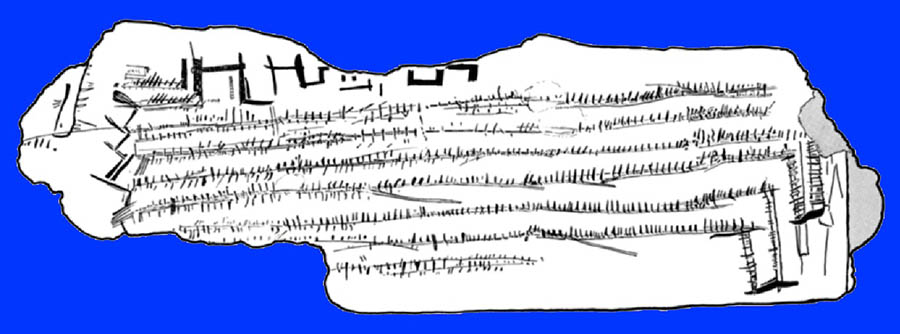
Fig. 3. Line drawing of the front face of the Thaïs bone, showing the boustrophedon sequence and groupings of markings, after Marshack 1991

Fig. 4. The luni-solar time-reckoning model, after Marshack 1991
Comparative analysis
The markings on the Thaïs bone represent the most complex and elaborate time-factored sequence currently known within the corpus of Palaeolithic mobile art. The artefact demonstrates the existence, within Upper Palaeolithic (Azilian) cultures c. 12,000 years ago, of a system of time reckoning based upon observations of the phase cycle of the moon, with the inclusion of a seasonal time factor provided by observations of the solar solstices.
Authenticity and integrity
The Thaïs bone was discovered in situ in 1968-69 with the sequence of markings intact. None of them could have occurred naturally, demonstrating conclusively that this rib fragment was engraved by people in the Azilian period.
Management and use
Main threats or potential threats
There are no potential threats to the object within the scope of normal storage, apart from damage resulting from force majeure.
Cultural environment
The Thaïs cave is situated close to the Campalou rock shelter (Abri de Campalou). This contained a rich archaeological layer dating to the Late Magdalenian (12,800 ± 300 BP) and Epipalaeolithic-Azilian, where engravings on bone artefacts have also been found.
Archaeological / historical / heritage research
Initial studies of the Thaïs bone were undertaken by J.-É. and J.-L. Brochier in the early 1970s, following its discovery in their excavations of 1968-69. The substantive analysis and interpretation was carried out by Alexander Marshack in the course of his own meticulous microscopic examination of the object during the 1970s and 1980s.
Management, interpretation and outreach
There are no special management arrangements relating to this object.
References
Bibliography (books and published articles)
Brochier, J.-É. and Brochier, J.-L. (1973). ’L’art mobilier de deux nouveaux gisements magdaléniens áâ St Nazaire en Royans‘, Études Préhistoriques 4, 1-12.
Brochier, J.-L. and Soleil, P. (1991). Préhistoire. (Parcours/Collections). Valence: Musée de Valence.
Marshack, A. (1991). ’The Taï plaque and calendrical notation in the Upper Palaeolithic‘, Cambridge Archaeological Journal 1(1), 25-61.
Links to external sites
Musée de Valence Collection Archéologie: ”400 000 ans d’Histoire”
No multimedia content published
Currently there is no multimedia content published for this case study






